Jennifer Lawrence X-Men: Dark Phoenix
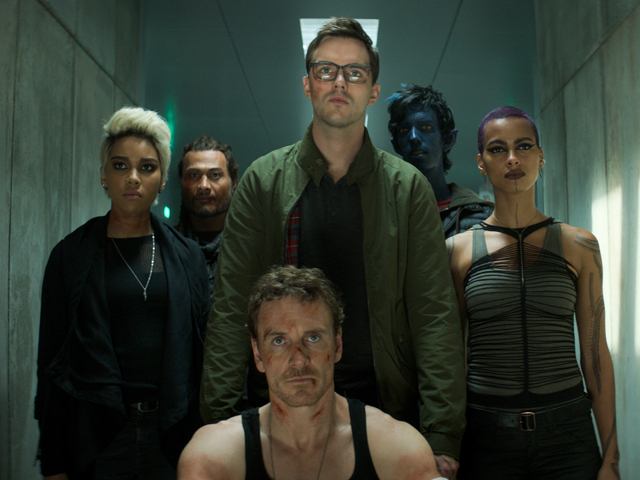
X-Men Face Their Most Formidable and Powerful Foe
Cast: Jennifer Lawrence, Jessica Chastain, Tye Sheridan, Olivia Munn, Nicholas Hoult, James McAvoy, Michael Fassbender, Evan Peters, Kodi Smit-McPhee, Alexandra Shipp, Sophie Turner
Director: Simon Kinberg
Genre: Action, Adventure
Running Time: 114 minutes
Synopsis: From writer-director Simon Kinberg comes the most radical X-Men film ever made: Xmen: Dark Phoenix tells the iconic story of Jean Grey's transformation from gifted mutant into the most powerful force in the universe. The culmination of a superhero saga nearly two decades in the making, the spectacular new blockbuster is part science-fiction thriller, part character-driven drama, posing intriguing questions about identity and destiny.
During a life-threatening mission to outer space, Jean Grey is nearly killed when she absorbs a cosmic entity that leaves her with powers far beyond anything she or any other mutant has ever possessed. Once she returns home to Earth, she struggles with these near-godlike abilities, but the force inside her is too overwhelming to contain. Spiraling out of control, Jean hurts the ones she loves most. Her actions tear the X-Men apart, and the heroes find themselves deeply compromised at a time when they must face their most dangerous enemy yet"one of their own.
X-Men: Dark Phoenix
Release Date: June 6th, 2019
About The Production
Who are we?
Are we simply what others want us to be?
Are we destined to a fate beyond our control?
Or can we evolve, become something…. more?
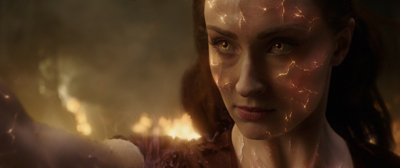 X-Men: Dark Phoenix: The True Culmination Of The X-Men Saga
X-Men: Dark Phoenix: The True Culmination Of The X-Men Saga
What do you do when the person you love becomes the world's greatest threat? It's the question at the heart of one of the most enduring storylines in the decades long history of the X-Men comic books, the Dark Phoenix saga. Written by industry legend Chris Claremont and illustrated by artist John Byrne in 1980, the story in many ways represents the ultimate X-Men tale: Jean Grey is transformed into a force that not even her mutant family can comprehend. She becomes an outsider among outsiders, a being beyond the reach of even those closest to her.
"The Dark Phoenix saga is one of the most beloved of the X-Men series in its long lineage, primarily because it's not a story where you have heroes and villains, black and white," says Simon Kinberg.
A lifelong comic book fan, Kinberg felt it was important to tell the Dark Phoenix saga on the big screen in a way that would truly do justice to its distinguished legacy. The writer-director has been a presence on the X-Men films since 2006's X-Men: The Last Stand, having either written or produced every installment in the series (in some cases, serving as both writer and producer). The 2006 film included aspects of the Dark Phoenix story, but more than 10 years on, the time was right for a darker, grittier, much more faithful adaptation that would serve as a capstone to nearly two decades of superhero filmmaking. Kinberg not only wrote the script for this new telling, but he also makes his directorial debut with the film.
At its core, this is a tale of a woman struggling with her personal demons, and only the love of her family"the X-Men"can save her soul, and the world. "This movie's very different from the previous X-Men movies," Kinberg says. "The source material is different from the other X-Men comics that we've drawn upon in the past. It's more psychologically complex and emotionally volatile. The emotions it gets into are rawer than a lot of the other X-Men comics."
Kinberg had a supportive partner in his quest to make a more character-driven XMen film"producer Hutch Parker, who has been involved with the franchise since the beginning, first as an executive at 20th Century Fox and later as a producer on the series beginning with 2013's The Wolverine. "X-Men: Dark Phoenix was an opportunity to do something unique and more specific in ways that previous movies haven't really had the opportunity to be," Parker says. "This film is a much more thorough investigation and much truer to Jean as a character. This feels very different, with a different tone and a different sense of cinematic style that is appropriately suited to the story we're telling."
When X-Men: Dark Phoenix opens, it's 1992. The X-Men, now widely beloved superheroes who enjoy celebrity status, are called upon by the U.S. government to save imperiled astronauts whose mission has gone horribly wrong. Over the objections of Raven (Jennifer Lawrence), the team climbs into the X-Jet and heads out on a lifethreatening rescue mission. Among the stars, a mysterious cosmic entity targets Jean Grey (Sophie Turner), overwhelming her body and, at first, appearing to claim her life. When she does awaken, Jean initially feels strong, recharged. But back on Earth, she begins to realize that she's attained powers beyond her understanding, or her control.
As she uncovers long-held secrets about her past"truths kept from her by Charles Xavier (James McAvoy)"she becomes increasingly destructive, lashing out at those closest to her in paroxysms of anger and despair. "What happens with Jean when she comes back from space is that she has a power she can't control inside of her, and it's escalating and intensifying everything inside Jean, which can unleash or liberate aspects of her personality," Kinberg says. "That's power, emotion and rage, and that's passion."
Desperate to help Jean regain her equilibrium, Raven reaches out to her as a mentor and friend. But Jean turns her fury on Raven, killing her. That shocking event rips apart the X-Men"some of the mutants insist that they must go to any lengths to save their friend, while others believe they need to stop her before any more lives are lost. "What was most intriguing to me and why this story has spoken to so many people is that on a very human level, it's about someone you love starting to unravel psychologically," Kinberg says. "What happens when people lose themselves in real life is that their loved ones hold on and want to help or save them. Sometimes you get dragged down with them and there are others who, at a certain point, give up on them. This movie is about that question of, when do you let go and give up on someone you love."
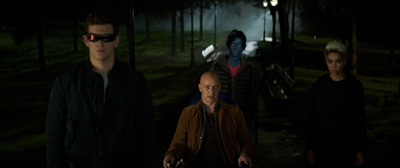 It was more than three years ago that Kinberg began to contemplate the idea of tackling a definitive version of the Dark Phoenix saga. At that point, production on 2016's X-Men: Apocalypse was nearing completion"that film told a disaster story writ large with elaborate set pieces and eye-popping special effects, which left less time for exploring the ever-evolving relationships among the mutants. When considering what adventure could logically follow in the wake of such a massive blockbuster style of film, Kinberg wanted a complete change of pace.
It was more than three years ago that Kinberg began to contemplate the idea of tackling a definitive version of the Dark Phoenix saga. At that point, production on 2016's X-Men: Apocalypse was nearing completion"that film told a disaster story writ large with elaborate set pieces and eye-popping special effects, which left less time for exploring the ever-evolving relationships among the mutants. When considering what adventure could logically follow in the wake of such a massive blockbuster style of film, Kinberg wanted a complete change of pace.
"I missed some of the more intimate character work of the other X-Men films," he says. "I wanted to do something more grounded."
By that point, the X-Men franchise had progressed to a place where the series could easily accommodate something less stylized and more daring"comic book movies as a genre also had proved time and again that they could serve up substantive themes and compelling character work inside mass entertainments. No film underlined that fact better than 2017's Logan, which saw Academy Award®-nominated actor Hugh Jackman reprise his signature role as The Wolverine for one final time in an R-rated, powerfully dramatic standalone story of sacrifice and redemption.
"Certainly, Logan was a validation of the belief that you could do a drama in this space and still satisfy the traditional comic book audience, in fact maybe exceed that expectation," Parker says.
It was also finally time for an X-Men movie to have a female lead. The women in the X-Men films"played by powerhouse actresses from Famke Janssen to Halle Berry" were complicated, dynamic, and always had agency, but their stories never quite came to the fore. After nearly 20 years, X-Men: Dark Phoenix is squarely focused on the journey of Jean Grey and the women who surround her"including Jennifer Lawrence's Raven and Jessica Chastain's Smith, a villainous new presence who encourages Jean to abandon her humanity and give in to her darkest urges.
"Now was the time for a female-led superhero movie, and the Dark Phoenix story is the most powerful female-led storyline in X-Men history," Kinberg says. Additionally, Kinberg sought to craft an adventure that would offer a much more nuanced depiction of good and evil appropriate to our turbulent times. He wanted to emphasise the duality that can exist within the same person, the darkness and the light.
"We've gotten to a place where audiences are ready for a disruptive, radical story where a good guy goes bad, where a hero loses control and becomes destructive, even homicidal," Kinberg says. "Comics, and even comic book moves, tend to tread in good guys and bad guys, heroes and villains. When the hero does something villainous or when a good guy does something bad, it's shocking. You're not sure what you're rooting for. "Right now, we're living in a world that is a little upside-down politically and socially," he continues. "Everything's not as binary as it used to be. There's not a lot of unity. Everybody feels like they're splitting apart. A story about a character who is herself splitting apart, and as a result of that, is splitting apart the family of the X-Men, it felt very relevant."
Months before he began writing the screenplay in earnest, Kinberg met with actress Sophie Turner to discuss his ambitious plans for the superhero drama. Turner had played Jean before in X-Men: Apocalypse, but X-Men: Dark Phoenix would require a different kind of commitment from the Game of Thrones star.
"I told her that her character essentially becomes schizophrenic, starts to lose her identity and ultimately it coalesces into two identities, which is Jean, who's getting smaller and weaker, and Phoenix, who's becoming stronger and stronger," Kinberg says. "I told her she was going to have to play the trauma of losing her mind and killing people that she loves, and every possible color on the emotional spectrum."
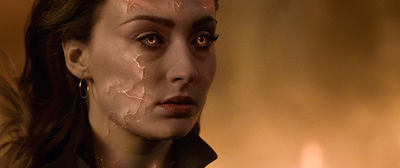 From the outset, Turner was excited by the opportunities afforded by the storyline and was eager to tackle the central role in the new film. "It was daunting," says Turner. "Simon really wanted to put the story and Jean's journey at the forefront because so often in superhero movies the real arcs and the stories can get lost behind the big, fabulous stunts."
From the outset, Turner was excited by the opportunities afforded by the storyline and was eager to tackle the central role in the new film. "It was daunting," says Turner. "Simon really wanted to put the story and Jean's journey at the forefront because so often in superhero movies the real arcs and the stories can get lost behind the big, fabulous stunts."
"The thing about the Jean Grey/Dark Phoenix story is that she's not a villain, but she's not a superhero who's going to save the world and everything's fine," Turner adds. "She's one of the few characters that's very tormented and broken. There's a realism to her, it's painful and her experiences remind you of mental illness. It's not too fantastical for people to comprehend. There's no black or white with her, it's a very gray area. It's a struggle that's very true to a lot of people and that's why people love her."
After Kinberg and Turner's initial meeting, Kinberg began sending the actress research material to prepare her character. "I went home and found a ton of YouTube clips and other documents to send her about schizophrenia and multiple personality disorder to get her to start thinking intellectually about it before thinking about it emotionally," says Kinberg. "She devoured it all and came back at me with a bunch of questions and ideas almost instantaneously."
Their ongoing dialogue influenced Kinberg as he completed various drafts of the script. As he worked, another important story point emerged that called into question Charles Xavier's role as the leader of the X-Men and the inadvertent catalyst behind Jean's transformation. When the film opens, Charles is relishing his privileged status as the leader of the mutants"something he enjoys, Raven rightly points out, even though he's rarely the one on the frontlines.
"There were a lot of things that I wanted to explore that we've never explored in these movies before"like Charles creating a superhero team called the X-Men, named after himself," Kinberg says. "He's a guy who lives in a mansion, who doesn't leave that mansion and throws a whole lot of other people in harm's way, many of them who are quite young. I wanted to examine that and problematize that. There's an ego attached to that and a very patriarchal, paternalistic quality to it. We live in an age now where that doesn't go without notice, and it has gone without notice for decades of the comic book and for now two decades of the movies."
Actor James McAvoy, who has played Xavier in three earlier X-Men films, was intrigued to explore new facets of the character. "Charles in this movie, he starts to believe his own hype," McAvoy says. "He's on the cover of Time magazine. He is very much the public face of the X-Men"he's congratulated for all their work. He's the guy on the red carpets, shaking hands with presidents. He is very much like a father who loves his children and believes that they are capable of anything. That all sounds positive, but the downside of it is that, if they don't achieve everything, if they fall short of the very lofty expectations the world and Charles has put on his team, he feels that somehow reflects badly on him."
When Charles ignores Raven's misgivings about the interstellar rescue mission and sends the team into space, Jean's fate is sealed. What's more, when she learns that Charles has erected barriers in her mind to protect her from painful truths about her past, she feels deeply betrayed, further fueling her violent leanings. "She comes back to Earth with a nagging curiosity and desire to find these missing parts of her life that Charles has hidden from her," McAvoy says. "When she realizes what he's done, there's a sentiment of justified righteous anger there"instead of allowing her to process a difficult childhood, Charles disrespected her by locking her memories away. When that trauma reemerges, it galvanizes that dark power within her."
Those events lead directly to the confrontation that result in Raven's demise. The decision to kill off the character was one that Kinberg did not arrive at lightly, but he felt it was crucial to telling the Dark Phoenix story properly and to set up the conflict between Charles and Hank (Nicholas Hoult) and Erik Lehnsherr (Michael Fassbender). "When I was first thinking about the movie, I knew I needed an emotionally shattering event to split the X-Men up and to make people who would normally defend Jean start to question her and to question each other," Kinberg says. "It felt like it had to be the death of a character, and I quickly landed on Raven because of her relationship to Erik, Charles and Hank. Erik and Hank had both had romantic relationships with her. For Charles, she is like a sister to him. Killing her would have the greatest impact emotionally on the most characters. What that does for the audience is indicate that anything can happen. Nobody is safe."
Adds Parker: "It felt like if you're going to tackle a real crisis within the family, you have to be willing to spill some blood and feel the consequences. Raven is the one who's most willing to confront Charles and his belief system and peel away the veneer a little bit. Raven is the character who first seizes on that idea of his hubris, is the first to challenge him about it, and subsequently, she's the one who's sacrificed. Her very alarms are part of what propel her forward to reach out to Jean and that is part of what leads to her death."
Losing Raven devastates Hank, who turns against his mentor, Charles, and is determined to seek revenge. "He's lost his soulmate," Hoult says. "That takes Hank to a very different place than we've ever seen him in any of the other movies. He's filled with this rage and desire for revenge to kill Jean for what she did."
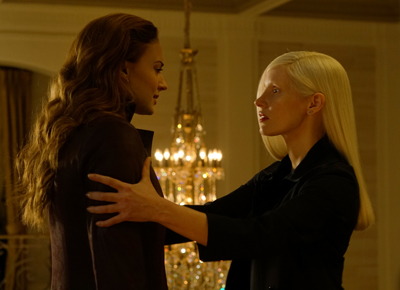 Chastain's character, an alien in human disguise who covets the force that has amplified Jean's already extraordinary abilities, soon takes Jean under her wing, becoming a very different sort of mentor than either Raven or Charles ever were. She encourages Jean to act on her dark impulses, to subjugate the lesser beings around her. The character's end goal? To rid the planet of human life, paving the way for her alien race to inhabit Earth as their new home.
Chastain's character, an alien in human disguise who covets the force that has amplified Jean's already extraordinary abilities, soon takes Jean under her wing, becoming a very different sort of mentor than either Raven or Charles ever were. She encourages Jean to act on her dark impulses, to subjugate the lesser beings around her. The character's end goal? To rid the planet of human life, paving the way for her alien race to inhabit Earth as their new home.
"When Simon and I first talked about this character, I had this idea of seeing the character more as someone that was emotionally removed from the outcome of what happened," Chastain says. "She's 1,000 times smarter than anyone on this planet. She comes to the planet, explores mankind, realizes that, in her mind, they're bacteria. They're a cancer. Not only are they a harm to themselves, they're a harm to the planet. They consume everything with greed. She realizes she needs to eliminate the bacteria. She doesn't see it as malicious. It's not something she does based on revenge. It's something she does for the good, in her mind, of all."
Kinberg wrote the role specifically for Chastain"the pair became good friends after having worked together on Ridley Scott's hit 2015 film, The Martian, which Kinberg produced.
"When I was thinking about this role of someone who was really empowered and helping Jean tap into a power that she was afraid of, and doing it in a way that was both strong and yet sly and seductive, given the nuances of all of that, I couldn't really imagine anybody other than Jessica playing the role," Kinberg says. "I wrote things in it that I felt would speak to her as an actress. There was some interesting drama to play and then there were some things that are somewhat feminist or political in it that I thought also would speak to Jess. I thought she would do a very good job of delivering all of that without it feeling pedantic."
Throughout the writing process, Kinberg had been weighing the idea of stepping behind the camera to direct for the first time. It was a natural evolution for the writerproducer who had been a constant presence on the sets of X-Men: The Last Stand, X-Men: First Class, X-Men: Days of Future Past and X-Men: Apocalypse as well as the two Deadpool movies and Logan.
"I had a feeling I wanted to direct," he says. "I'd lived in this universe so much, but I was waiting for the story that I felt like I was uniquely suited to tell. As I got into the process and started to think about the themes of the movie, I felt like very emotionally connected to it. That made me feel like not only could I direct it, but also that I had to direct it. It was like having a child and handing it to a stranger"I couldn't imagine that." Directing the film gave Kinberg the opportunity to shape the tenor and the tone of X-Men: Dark Phoenix, to ground the story in the real world visually and to help guide the actor's performances on set. The goal was always to create a bolder, edgier, more intense, more emotional X-Men film, one that was far more character-driven and deeply human than any that had come before. As the X-Men struggle to come to terms with what Jean's done, with what she's become, allegiances are fractured and new alliances formed. But in the end, to save both Jean Gray and the galaxy, the X-Men must find a way to set aside their differences and work together for a common cause.
"There is something about the splitting apart, then the coming back together, of the family of the X-Men that hopefully offers an optimistic message about our ability to survive and unify through the most extraordinary and shattering challenges," Kinberg says. "Whether it's the surrogate families that we build in our lives or the real families we have in our lives, it's the coming together that makes us strong.
"My favorite movies pose provocative questions, emotional questions, to an audience," Kinberg continues. "X-Men: Dark Phoenix asks profound, primal questions"if you love someone, at what point do you let them go? Or do you hold onto them forever, at all costs, even at your own peril? I don't know that I have the answer to that, but maybe if I were to posit an answer to it, I would say to never give up on the people that you love."
It's a fitting conclusion to the X-Men franchise's remarkable 18-year run. With Xmen: Dark Phoenix serving as the culmination of the saga after an impressive 12 films, Parker, who was there at the inception of 2000's X-Men, says the experience of bringing the franchise full circle feels bittersweet.
"What we were able to do with the first film was introduce a tone that would have seemed, I think to most eyes, impossible in association with what we knew comic book movies to be at that time," Parker says. "It was a game-changer in my opinion. Since then, comic-book films have become such an exciting and fertile platform. I feel like we're only beginning to see the diversity of storytelling that's possible within these worlds and with these characters. I'm grateful to have been a part of it, but I'm also aware that it will continue on long after all of us have moved on."
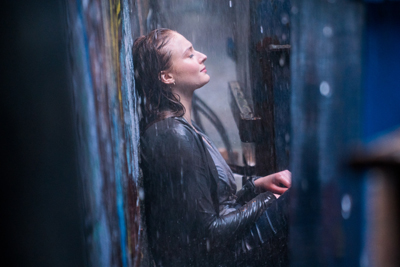 About The Production
About The Production
Just as X-Men: Dark Phoenix is thematically and tonally different from all the previous X-Men films, the look of the movie is equally distinct. "After almost twenty years of making a certain style of X-Men film, it was time for a change," says Simon Kinberg. "I felt like a grittier tone was appropriate to this story because I wanted it to be more intense and intimate and personal. My job was to make sure that everybody understood that we were making a different kind of X-Men movie than had been made before, an X-Men movie that would feel more real, would feel more relatable hopefully to audiences, and would feel subversive again."
"This is my third X-Men movie in a row," adds Todd Hallowell, who is both a producer and splinter unit director on X-Men: Dark Phoenix. "Simon wanted to approach this one in a very different way. He said that the more real the world it can be, the better it is for the story. We've tried to approach it that way and that's had an effect in the art direction, production design, costume design, props and everything. Everybody's been very aware of that mantra."
X-Men: Dark Phoenix was shot over six months beginning in the spring of 2017 in and around Montreal. Production designer Claude Paré (It, Rise of the Planet of the Apes) took the realistic approach that Kinberg wanted to heart, crafting a moodier look for the film. "The first thing we talked about was we wanted this movie to be grounded in reality," Paré says. "We wanted a palette that was darker, not as colorful as the previous films. Simon has a really good eye"he's very aware of what things should look like."
"Claude is one of those people who is so inspired about the way he goes about creating worlds, whether they're real worlds or imaginary worlds," says Kinberg. "Whether they be alien planets or a lower-class suburb, he's really meticulous. At the start of this process, I told Claude that I wanted to create this world physically. I didn't want to do green screen or set extensions and fake it. I wanted the actors to be able to feel the sets in a tactile way and the audience will also feel the story in a more tactile, immediate, real way."
Among Paré's tasks were constructing the neighborhood where Jean had lived as a young child. She goes back to the modest street to solve a mystery about her past, but the trip becomes the site of an explosive standoff between Jean and the X-Men, resulting in Raven's untimely death.
"One of my favorite sets is Jean's neighborhood," says Kinberg. "It's six small houses with a little bend at the end and a rickety bridge. Each house has a different identity created for the people that live in it"there's the fisherman, the truck driver, the angry married couple. Each had detailed ideas about who these characters were, what their front lawns look like and what toys or trash would be around their houses. All of that detail accrues for the characters, the actors and the audience."
The neighborhood street was constructed entirely from the ground up. "We started with a field of gravel," Paré says. "We created a neighborhood that is very lower- middle class. I wanted to have a bridge in there to show that people drive by, but they don't stop there. At the other end of it, I wanted to have this field of electrical devices with pylons and towers and wires. We poured an asphalt road, but just had gravel leading to the lots, no sidewalks. All the houses were prebuilt in the shop, and we assembled them on site. The set dressing team did an amazing job putting in all the electrical wires hanging over each of these houses, the cables, the gutters, everything. It was just unbelievable."
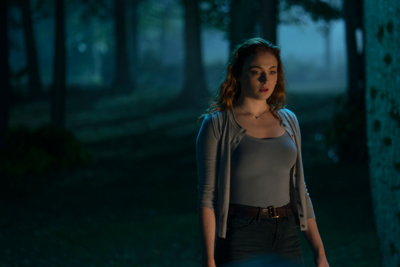 Just as much effort went into creating the fictional country of Genosha, an island nation where Fassbender's Erik lives peaceably among exiled mutants including two new characters, Selene (Kota Eberhardt) and Ariki (Andrew Stehlin). The community was constructed about an hour outside of downtown Montreal. "It's a refuge for mutants who don't have anywhere else to go," Fassbender explains. "It has a classic commune vibe" people living off the grid, being self-sufficient."
Just as much effort went into creating the fictional country of Genosha, an island nation where Fassbender's Erik lives peaceably among exiled mutants including two new characters, Selene (Kota Eberhardt) and Ariki (Andrew Stehlin). The community was constructed about an hour outside of downtown Montreal. "It's a refuge for mutants who don't have anywhere else to go," Fassbender explains. "It has a classic commune vibe" people living off the grid, being self-sufficient."
That tranquility is interrupted when Jean arrives, seeking Erik's counsel on how best to manage her newly acquired powers in the wake of Raven's death. "The Dark Phoenix side of her is enjoying hurting people, enjoying this violence, and I think she thinks that Erik might feel some kinship to that. She comes to seek permission of a sort. But of course, Erik's history is a lot different. He partakes in violence because of a vengefulness that's in him. It's not that he gets much satisfaction out of it."
When the authorities trace Jean to Genosha, the refuge becomes the site of a battle of wills between Erik and Jean"and Erik is stunned to see the full range of Jean's abilities. The sequence includes what is essentially a psychic tug of war over a military helicopter, much of which was staged practically. Second unit director and supervising stunt coordinator Guy Norris (Mad Max: Fury Road) played a major role in coordinating the details for the shots. "I looked at it like we were making a war film that just happens to have superheroes in it"so, being grounded in reality as much as possible and with incamera stunts and action, which I love doing," Norris says.
"There was a real chopper on the ground spinning with things exploding around it," Kinberg says. "The crazier thing is that the chopper that Michael and Sophie are fighting over that's dipping and coming back and forth, that was also a real chopper." The helicopter, which weighed approximately 4,000 lbs., was suspended from a cable and held aloft by duel crane arms that were digitally painted out of the frame during postproduction. "You could control it coming back and forth whenever you wanted Sophie to be winning or Michael to be winning that battle for control of this chopper," Kinberg says. "They were interacting with a real helicopter, with men jumping into it. Sometimes, it's within 10 or 15 feet of Michael Fassbender. That's all real."
Fassbender was also at the center of another spectacular action sequence that was shot on a reproduction of Fifth Avenue. Magneto (Erik) and Beast (Hank), determined to take revenge against Jean for Raven's murder, turn up the embassy where she is hiding out with Jessica Chastain's alien antagonist. To break into the building, Magneto raises a subway train from below the street and uses it to bulldoze an opening into the embassy. "We built that whole New York street on a soundstage, so we could control it and blow things up," Kinberg explains. "That was quite an elaborate sequence to film. The moment where Michael comes in the embassy and the train car comes crashing in behind him, that is all real. That train car is on a rig"it's a real subway car that is coming at a pretty fast speed right behind Michael Fassbender with the wall exploding behind Michael. It ended up stopping inches away from him. We didn't expect the wall to crack above his head, but pieces of it came raining down on either side of him. Michael Fassbender"because he's such a badass"did not flinch or even blink. And thank God he didn't because we only had one take of that."
Even during the most complicated moments of the shoot, Kinberg kept his cool, something that Hutch Parker found especially impressive for a first-time director. "I was really struck by how comfortable he was in the role because it's a tough transition from writing or producing" or it can be," Parker says. "It was helped by the fact that he's had such a longstanding connection to the material, and it was helped by the fact that he's been a producer on so many of these movies. He's been up close and in the thick of it in every fashion. He knows these characters and specifically these actors so well. He had a real comfort and familiarity with it all. He was just having a blast and that's a very good sign." Kinberg says he also felt secure in knowing he had found the right collaborators for every department. In addition to Paré, the filmmaker worked with costume designer Daniel Orlandi (Logan) to create all the looks for the characters, including the new uniforms the X-Men wear. "We went through a long process of getting the uniform just right"I wanted it to be true to the X-men comics," Orlandi says. "We went back to a couple of the comics and really studied them, looked at how sleek some of the suits really were, and graphic. We wanted them to be very modern, very simple."
Oscar®-winning director of photography Mauro Fiore (Avatar, Training Day) was keen to help Kinberg achieve the naturalistic look the writer-director wanted for X-Men: Dark Phoenix. To that end, the film includes a great deal of handheld camerawork, a first for any installment in the X-franchise.
"In previous X-Men movies"and this is true for a fair amount of large-scale Hollywood movies and comic-book movies"they tend to use very smooth photography, crane moves and dolly moves, everything's slick," Kinberg says. "Here, instead of the camera being still and the characters being the motion, the characters are moving, but the camera is also moving a little bit. That creates the rawness we were talking about on set. It's a feeling that everything has a little bit of imperfection to it. The action is where the audience will feel it most, but even in dialogue scenes, you'll feel a bit of breath around the characters."
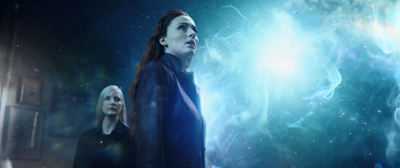 The same aesthetic prevailed in post-production when it came to finalizing the action sequences, whether set in outer space or midtown Manhattan, according to Oscar®- nominated visual effects supervisor Phil Brennan (Logan, Snow White and the Huntsman). "With the big fight sequence that takes place with the X-Men using their superpowers among the general public in New York City, that was something, we haven't seen much of in X-Men movies before"the way the general public is affected," Brennan says. "It's a terrifying thing."
The same aesthetic prevailed in post-production when it came to finalizing the action sequences, whether set in outer space or midtown Manhattan, according to Oscar®- nominated visual effects supervisor Phil Brennan (Logan, Snow White and the Huntsman). "With the big fight sequence that takes place with the X-Men using their superpowers among the general public in New York City, that was something, we haven't seen much of in X-Men movies before"the way the general public is affected," Brennan says. "It's a terrifying thing."
One of the most important tasks Brennan faced, however, was finalizing the look for the so-called Phoenix effect, the light that radiates from Jean Grey's skin as her otherworldly powers become dominant. "The Phoenix effect is really something we spent a lot of time on trying to get right," Brennan says. "As we progress through the film, the Phoenix effect shows up in many different forms and many different levels of intensity. The first little hints of the Phoenix effect are quite subtle. Toward the end of the film, when the Phoenix effect is in full force, it's much, much bigger. It affects her skin, it affects her eyes, it affects really all aspects of her emotions.
"It also affects the air around her quite considerably," Brennan continues. "There are shock wave-type components. There are particle components. There are smoke and fire and flames, of course"almost an internal lava effect. There are a lot of pieces to it that come together to create the final Phoenix effect. But it's all tied with Jean's emotion." Adding to the undeniable impact of the film is Hans Zimmer's remarkable score. The Oscar®-winning composer's work lent immeasurably to X-Men: Dark Phoenix, underlining the deep sense of unease at the heart of the story and helping to send audiences out of the theater entertained and deeply affected by Jean Grey's singular journey. "I love the way that he creates music that sometimes is almost not music, it's just sound," Kinberg says of Zimmer. "It's not sweeping and comfortable. It gets under your skin. It's really emotional when it wants to be emotional, but without being sentimental. That was exactly what we needed for this film."
Release Date: June 6th, 2019
MORE





